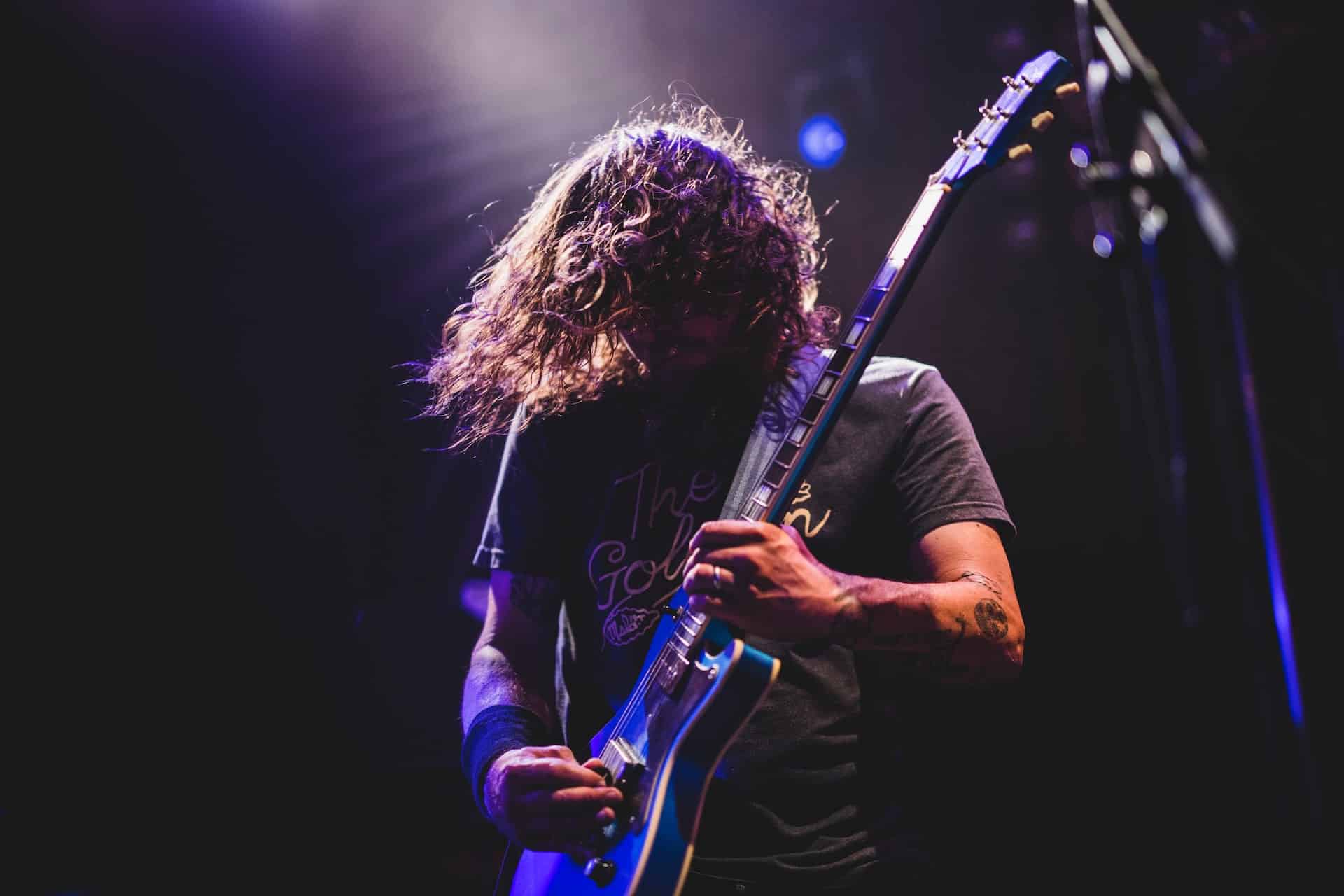It’s time to step out of the shadows and finally be the guitar hero you want to be! Perhaps you’ve been practicing hard the solo parts of your favorite songs, or maybe you’re tired to play the rhythm bits and are ready to move on to a greater challenge. In this article, you will learn the basics about how to play lead guitar with some useful examples.
What does being lead guitar mean anyway?
Being the lead guitarist in a band means you’re usually at the forefront. This task sure means more than dressing and moving extravagantly! You’re in charge of the melodic aspect of whatever your band is playing, and for this, you need to understand how to stand out from the harmonic crowd.
A Lead guitarist is the one that plays what we remember the most out of a song: the melodic motifs, more commonly known as riffs. It either follows or accompanies the vocalist, and it usually has some time, especially for it: soloing time!
Shorter, higher chords
One of the perks (or duties, however you want to see it) of playing lead guitar is being able to play on top of the underlying harmony created by the bass guitar and rhythm guitar. This means that, when the rhythm guitar is playing open chords or chords low on the fretboard, as a lead guitar, you will usually be playing either arpeggios or short chords in their inverted form. This will make your guitar sound in a higher pitch and can be used to create interesting harmonic interactions.
For example, while your rhythm guitar is playing power chords, you can play the same chord with an added 7th, 9th, or with a suspended 4th, depending on what the scale and melodic motif dictate. If you want to learn more about inversions, you can check out our article on how to learn chords or our article about the CAGED system and how it can be used to learn the fretboard quickly.
Riffs and licks. Licks and riffs?
A riff is a recognizable melodic passage in a song. For example, in Smoke On The Water, the most recognizable riff goes as follows:

A lick is more of an idea, a little melodic fragment that can be placed almost anywhere for filling purposes. As an example, we have the infamous fragment commonly known as “The Lick.” Below, you will find a short but comprehensive list of songs in which lead musicians have decided to throw The Lick, almost as an inside joke or as a musical cult.

Licks are very common in improvisation-heavy genres, such as jazz, blues, and folk. If you want to learn some beginner yet powerful licks, look no further: read our article on how to learn blues guitar.
Phrasing, improvisation and other skills you will need
Phrasing is the skill that involves the mixing of riffs and licks, as well as the way these are interpreted and “flavored” with different techniques, such as vibrato, sliding, hammer-ons, pull-offs, etc. It means knowing when to silence a note or when to let it ring, when and where to slide, hammer or pull strings to create some sort of melodic “speech,” and even when to go off the beat.
Improvisation and soloing is a more advanced skill that requires an understanding of the three previous items. When improvising, you will generally play licks and scales around a main melodic theme or a chord progression.
Everybody needs a hero – Who’s yours?
A great way to start testing your skills as a lead guitar is by getting comfortable with the lead parts of your favorite guitarists. Over time, you will be able to differentiate those phrasing quirks and those licks that have become the signature of your favorite guitarists.




